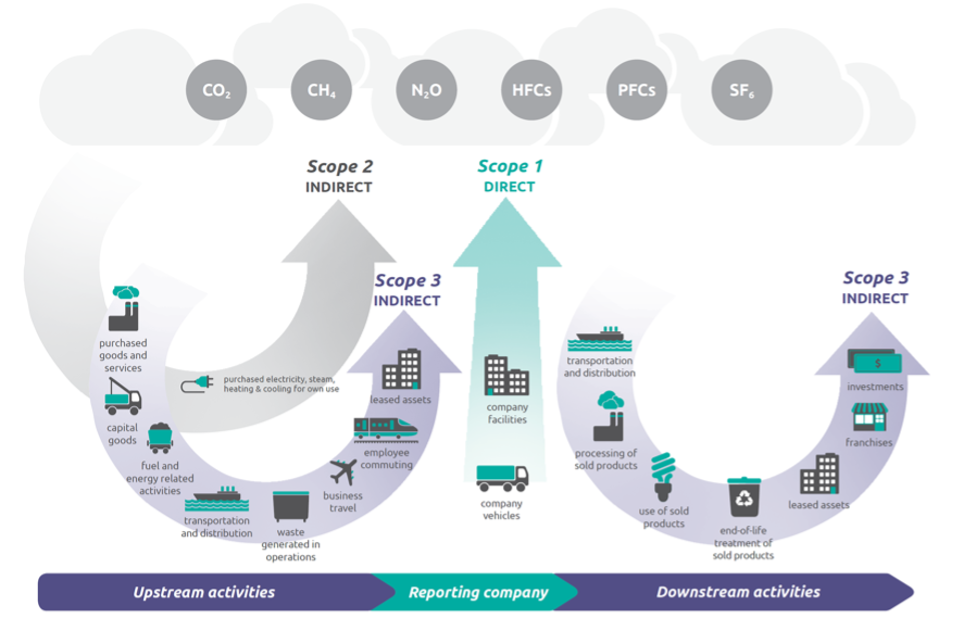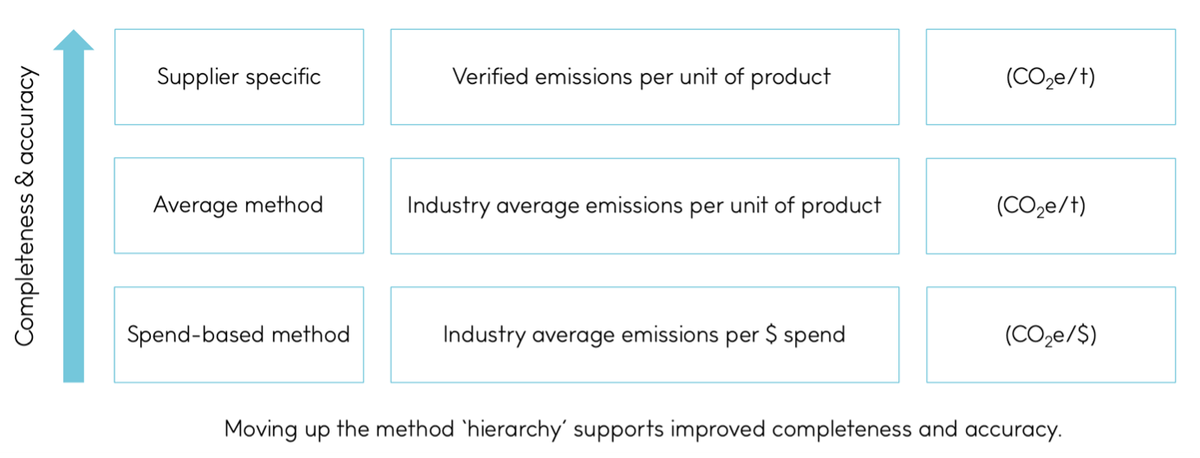Climate action is no longer a choice but a necessity for businesses across all industries. The demand from consumers, legislation and international markets/relationships, puts climate action at the top of business priorities. Pressure to measure, report and reduce carbon emissions is growing alongside business transparency about their impact on the planet and actions they are taking to support climate change mitigation.
Understanding the significance and opportunity to leverage action effectively can be instrumental in gaining a competitive edge in the market. Measuring a business’s carbon footprint offers insights that enable tangible change and initiate conversations across the value chain that will support effective emission reductions.
All business emissions can be categorised into Scope 1, 2, or 3. A businesses Scope 1 emissions are owned and controlled by them and come directly from their operations. Scope 2 emissions are indirectly sourced from purchased electricity, steam, heating, or cooling. Finally, Scope 3 emissions are indirectly sourced through its value chain.
A businesses value chain emissions encompasses all upstream and downstream activities associated with its operations and includes those required to produce a product or service. Each activity has associated emissions that contribute to the overall company footprint. These activities can include raw material sourcing, transportation and distribution, investments, and the end of life of a product.
According to CDP, measuring and reporting a business’s Scope 3 emissions is critical as it is, on average, 11 times larger than its Scope 1 and 2 emissions. Gaining insight into this emissions source offers opportunity to influence reductions through effective collaboration with suppliers, consumers, and end of life processors. This can include changing packaging materials, choosing alternative distribution methods, and implementing internal travel policies.
Globally accepted standards for organisational greenhouse gas measurement includes ISO 14064-1 and the Greenhouse Gas Protocol. These reporting standards are used to ensure completeness, consistency, accuracy, relevance, and transparency. Aligning or better yet, being certified to these standards provides a solid foundation for informed decision-making and target setting.

Figure 1: Overview of GHG Protocol scopes and emissions across the value chain. Sourced from the GHG Protocol.
Driving organisational emission measurement
New Zealand has introduced the Climate-Related Disclosures regime (CRD) which requires around 200 entities including banks, insurers, managers of investment schemes, and publicly listed entities to report their climate impact and risks. You can access the full list of mandated businesses here and learn more about the regime on the XRB website.
The CRD is an effective way to ensure climate change is consistently considered during business and investment decision making. As Climate Reporting Entities (CREs) are required to disclose their full emissions profile including Scope 3 emissions, it is important they collaborate with suppliers to support accurate reporting and management of these emissions. This is going to be a key trend over the next few years as value chain emissions knowledge across businesses becomes more mature.
In our recent webinar, our experts discussed how suppliers to CREs have the strategic opportunity to understand the regime requirements, methodologies, and demonstrate sustainability transparency. This in turn creates the strategic advantage of becoming a preferred partner.
Supplier specific data is the highest quality data within the method hierarchy, compared to the alternatives of industry averages based on cost or unit. By using supplier specific data, the reporting entities emissions measurement is more accurate and provides greater capability to implement targeted emissions reduction strategies. Additional tangible benefits include cost saving from emissions reduction initiatives, and access to better lending through climate finance such as sustainability-linked loans.

Figure 2: Different types of calculation methods for carbon emissions measurement.
To understand the emissions inventory of a business, measuring and reporting is the best place to start. The Toitū carbon certification programmes provides businesses with guidance and education on best practices to measure their carbon footprint accurately.
Gaining carbon certification from a third party provides credible verification and certainty to the carbon footprint calculation. This can simplify emission data sharing within the value chain and give confidence and credibility to the claims made by the business. To start your carbon measurement and certification journey, contact us today.
Navigating value chain emissions and embracing climate reporting is no longer an option but a strategic imperative for businesses seeking to thrive in a world shaped by climate action. By understanding how value chain emissions are compiled, adopting robust emission measurement practices, and aligning with global standards, organisations can position themselves as leaders in sustainability.
The time to act is now.
Watch our webinar recording to learn more on how value chain businesses can take climate action.
